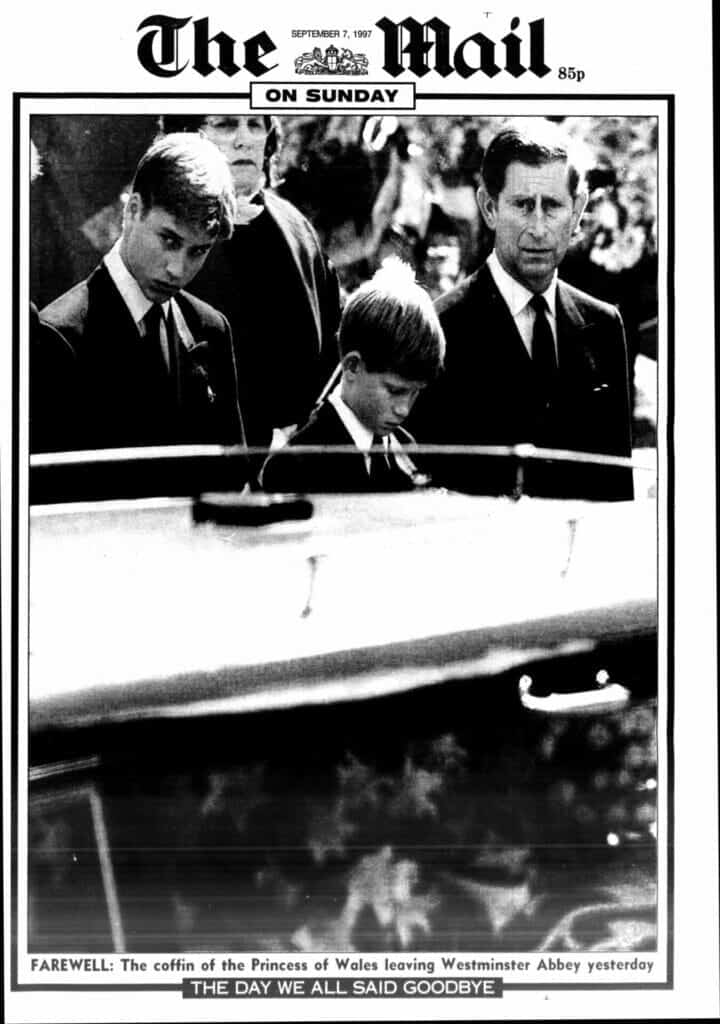│By Emma Harris, Associate Editor, Gale Primary Sources│
Adding to the wealth of newspaper archives already in Gale Primary Sources, the Mail on Sunday Historical Archive, 1982-2011 has now launched. With approximately 1,800 issues available, researchers can explore some of the most prominent news stories, controversies, and debates from the period, in one of the top UK Sunday newspapers of the last forty years.
Establishment of the Paper
The Mail on Sunday was established in 1982 under the same ownership as the Daily Mail. It was, however, editorially separate and on occasion presented a different political stance, most notably when columnist Julie Burchill encouraged readers to vote Labour in the 1987 election. As a tabloid newspaper, the Mail on Sunday provides shorter and more concise reporting than the older broadsheets, such as The Times, and often takes a more sensationalist tone, with eye-catching headlines and bold statements, such as seen in the article below. In common with other tabloids, it was physically smaller and carried more photographs than broadsheet publications. Amongst the 190,000 pages included in the archive can be found notable contributors, such as Piers Morgan, Peter Hitchens, and Norman Tebbit.

What’s covered in this archive?
• The Miners’ Strike of 1984
Established during the premiership of Margaret Thatcher, the Mail on Sunday reported on many issues central to the Conservative Party. One event during the early years of the Mail on Sunday was the Miners’ Strike of 1984-1985, a year-long spell of industrial action opposed by Thatcher and most of her Conservative government. The Mail on Sunday’s stance on the strike generally reflected that of the Conservative government. Consequences of the strike are highlighted regularly, including articles forewarning the detrimental impact on other industries like steel, and that the strikes could lead to further pit closures and unemployment – the opposite of what the strikes were aiming to achieve.

Like Gale’s other newspaper archives, the Mail on Sunday Historical Archive is an excellent resource for Digital Humanities, and stories such as this, which developed over time and saw increasingly heated rhetoric, are ripe for exploration through Gale’s text and data-mining platform, Gale Digital Scholar Lab, where tools such as Sentiment Analysis can offer deeper insight into the way events like the Miners’ Strike were portrayed.
• The Iraq War and Protest Movements
Beginning in March 2003, the Iraq War featured heavily in the Mail on Sunday, with coverage from a range of angles, including political, social, and financial. This analysis of the war also highlighted some of the key political and social attitudes of the time, such as anti-war movements – examples include articles on protests organised by the ‘Stop the War’ campaign. One such article demonstrates the international nature of this sentiment, noting how “passionate and peaceful demonstrations were held at some 600 cities around the globe,” alongside a London rally of possibly up to two million supporters. The impact of this wave of opposition, and the war itself, is highlighted through front-page dedication to such protests, as well as reactions from MPs like Ken Purchase.

• The Royal Family
Commentaries on the events and controversies surrounding the famous can be found throughout the pages of the Mail on Sunday, with the Royal Family of Britain being some of the most extensively covered individuals. The Mail on Sunday was created shortly after the marriage of Prince Charles and Princess Diana, and followed their relationship through their divorce and beyond, until the tragic death of Diana in 1997. The first issue released after Diana’s death, on 7 September, 1997, was predominantly dedicated to coverage of her funeral and the story of her life, highlighting the profound impact the editors believed the event had on Britain and the world.

Though many other celebrities regularly made it onto the front page of the Mail on Sunday, it was the Royal Family that, throughout the decades since its publication, continued to achieve large spreads focused on their life events. For example, the wedding of Prince William to Kate Middleton was given twenty-three pages of coverage.

Cartoons and Comic Strips
The Mail on Sunday offers far more than just articles on the biggest news stories – and the Gale Primary Sources platform allows users to explore all aspects of the newspaper. In the archive, researchers can search specifically for illustrated works like cartoons using the “Illustrated Works” results limiter. Although they primarily aim to entertain, cartoons are also a form of cultural expression and act as an opportunity to discuss societal changes happening at the time. Especially when set in the context of the rest of a newspaper issue and its reports, these illustrated works can highlight some of the contemporary perspectives regarding current events and the future. An example of a comic strip featured in the Mail on Sunday was Charles M. Schulz’s Peanuts. During the 1984 Wimbledon tournament, the characters of the comic can be seen engaging in tennis-related activities and conversations, reflecting the international excitement of the event.

A Great Addition to the Wealth of Newspaper Archives in Gale Primary Sources
From strikers to Snoopy, the new Mail on Sunday Historical Archive, 1982-2011 provides researchers with fresh perspectives on the biggest domestic and international news stories of the late twentieth and early twenty-first century, in fully searchable digitised issues covering more than three decades of British and global events.
If you enjoyed reading about the Mail on Sunday Historical Archive, you may like:
- From Rise to Red Top: The Role of the Mirror in Shaping British Journalism
- Eight reasons to check out The Telegraph Historical Archive, 1855-2000
- The Rogue Compositor at The Times in 1882
- Conspiracy Theories in the Archives
- A Media and Journalism Student is Thrilled to Discover Gale!
Blog post cover image citation: A montage of images sourced from the Mail on Sunday Historical Archive, 1982-2011.

